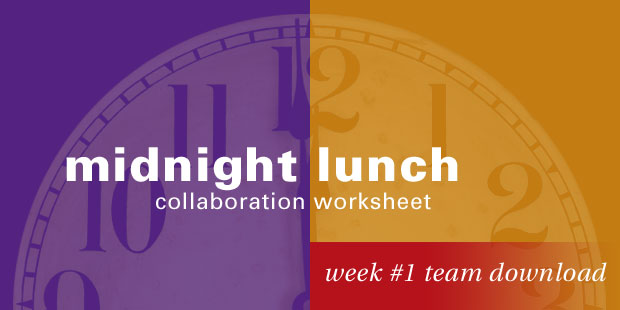
Midnight Lunch: The 4 Phases of Team Collaboration Success
According to Sarah Miller Caldicott, great grand niece of Thomas Edison, Edison viewed true collaboration as a value creation continuum. If one were to find a single notebook entry capturing Edison’s definition of true collaboration, Caldicott believes it would read something like this:
Applying discovery learning within a context of complexity, inspired by a common goal or a shared purpose.
True collaboration for Edison operated like an invisible glue that fused learning, insight, purpose, complexity and results together in one continuous effort.
Translating Edison’s decades of groundbreaking practices into language for the 21st Century leader, Caldicott has developed a four-phase model of the collaboration process.
- How do we create the foundation for true collaboration to flourish?
Phase 1 – Capacity: Select small, diverse teams of two to eight people who will thrive in an environment of discovery learning and collegiality.
- How can our collaboration team reframe the problem at hand, driving the greatest range of creativity and breakthrough solutions?
Phase 2 – Context: Focus the outlook of the team toward development of new context that broadly frames the problem or challenge under consideration. Use a combination of individual learning plus hands-on activities to drive perspectives for potential solutions.
- Can the collaboration team stay the course and continue forward despite disagreements?
Phase 3 – Coherence: Maintain collaboration momentum, creating frameworks for progress through inspiration, and inspirational leadership even though disagreements may exist. Newly discover, or re-emphasize, the shared purpose that binds the team together.
- How can our collaboration team leverage internal and external networked resources nimbly and with speed?
Phase 4 – Complexity: Equip and reskill teams to implement new ideas or new solutions using internally and externally networked resources, rapidly accessing or managing complex data streams the team must navigate. Leave a footprint that contributes to a broader collective intelligence.
Caldicott has developed a series of worksheets so your team can integrate its project work with true collaboration concepts in her new book, Midnight Lunch: The 4 Phases of Team Collaboration Success, from Thomas Edison’s Lab.
Why not integrate these worksheets into a weekly learning exercise with your team?
In honor of Edison’s achievements not only through his inventions but also in the area of collaboration, today begins a 12 week series of downloads you can use with your team. Each Monday beginning today and continuing for 12 weeks, a new download will be available for your team’s use.
You can download worksheet #1 here.
Edison leaves us a legacy we can return to over and over again as we newly shape a future that embraces the highest and best of our collaborative spirit.
If we did all the things we are capable of doing, we would literally astound ourselves. –Thomas Edison
Go Ahead – astound yourself…

Tags: Innovation, Sarah Miller Caldicott, Team, Thomas Edison












